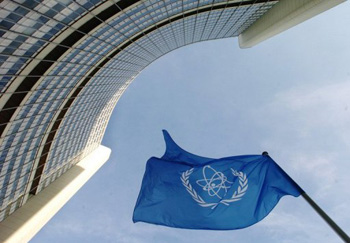The Wall Street Journal
By JAY SOLOMON

In a report issued Friday, the International Atomic Energy Agency also said Iran has begun deploying so-called second-generation centrifuges at its largest uranium-enrichment facility at Natanz, which could allow the country to produce nuclear fuel at three times its current rate.
Tehran has concurrently begun installing centrifuge machines at an underground site near the holy city of Qom, according to the U.N. agency, potentially minimizing the ability of the U.S. or Israel to launch military strikes against Iran’s nuclear facilities.
U.S. officials said the report reflects heightened international concern that Iran is developing the technologies to build nuclear weapons, a charge Tehran has repeatedly denied.
Washington also said Iran’s actions point to a need for additional international financial pressure on Tehran’s government to force it to comply with U.N. resolutions requiring it to suspend all uranium-enrichment activities.
“The IAEA and broader international community have fundamental concerns with the nature and intent of Iran’s nuclear program—and with the Qom facility in particular—that Iran has to put right after years of Iranian violations,” said National Security Council Spokesman Tommy Vietor. “Iran should do so without delay.”
The IAEA has for years voiced concerns that Iran has conducted clandestine studies on how to develop nuclear weapons, including testing explosives at high altitudes and modifying long-range Shahab missiles to carry nuclear warheads.
Much of this information originally came from an Iranian laptop computer to which Western intelligence agencies gained access in 2004, according to U.S. and IAEA officials. Tehran has alleged the information was fabricated.
The Vienna-based IAEA, in its latest report, said it has gained additional information, both independently and from member states, indicating Iran has conducted studies on how to build nuclear weapons. The IAEA said it continues to press Iran to answer all questions regarding the possible military dimensions of its nuclear program, but Tehran has so far refused to respond.
“The Agency is increasingly concerned about the possible existence in Iran of past or current undisclosed nuclear-related activities involving military-related organizations, including activities related to the development of a nuclear payload for a missile,” the IAEA said in the report.
The agency confirmed recent statements by Iranian officials that Tehran had begun deploying more advanced centrifuges at the Natanz facility. Iran has used a 1970s-model centrifuge, called the IR-1, which has proven prone to breaking down and enriches uranium at relatively slow rates. The IAEA said its inspectors confirmed that newer machines, called the IR-2m and the IR-4, have been installed at Natanz and that some have begun spinning the uranium gas used to produce nuclear fuel.
U.S. officials currently believe that Iran would need around two years to produce nuclear weapons if Tehran made the strategic decision to begin converting its stockpile of low-enriched uranium to the much higher weapons-grade levels. This timeline, though, could be significantly shortened if Iran successfully deploys significant numbers of the faster IR-2m and IR-4 machines, U.S. and European officials said.
The IAEA also reported that Iran had begun installing centrifuges to produce higher-enriched uranium at an underground facility at Qom run by Iran’s elite military unit, the Islamic Revolutionary Guard Corps. Iranian officials have said they eventually plan to transfer all of its production of 20%-enriched uranium to Qom and triple output. The Qom facility is buried into a mountain and seen as impervious to a military attack.
Diplomatic efforts to address Iran’s nuclear program have been stalled since January, when talks between Tehran and the international community broke down at a meeting in Istanbul.
Russia has floated a new plan that would call for loosening sanctions against Iran in return for it addressing the IAEA’s concerns about the possible military dimension of the nuclear program. But the Obama administration has responded coolly to Moscow’s program because it doesn’t specifically call for a freezing of Iran’s production of 20%-enriched uranium, according to U.S. officials.
Separately Friday, the IAEA released its first report on North Korea’s nuclear program in a year. The agency said it believed Pyongyang’s uranium-enrichment program, which was disclosed last fall, was developed in part through knowhow and equipment provided by the smuggling network headed by the Pakistani scientist Abdul Qadeer Khan.
The IAEA also said North Korea continues to pose a major nuclear proliferation threat. The report said Pyongyang assisted Syria in building a plutonium-producing nuclear reactor that Israeli jets destroyed in 2007. The IAEA also said North Korea passed on uranium feedstock for Libya’s uranium-enrichment program, which former leader Moammar Gadhafi gave up in 2003.
“The nuclear program of [North Korea] is a matter of serious concern and reports about construction of a new uranium enrichment facility and light water reactor…are deeply troubling,” the report said.